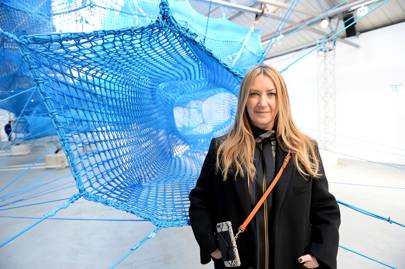“In a rapidly changing retail and global environment, it’s time for businesses to be brave and decisive,” Hindmarch said in a statement. “We have been transforming our business model since 2017, taking advantage of our strengths in creativity, experiential and direct-to-consumer [communication], and I’m incredibly excited for the next phase.”
The moves comes after Hindmarch’s Qatari backer, Mayhoola For Investments – who had gradually built up a 75 per cent stake in the company after acquiring a portion of it in 2012 – sold the business to Iranian-born entrepreneur Javad Marandi in March. Hindmarch's first motion as managing director will be to “turn around the business,” she said. “I want to make sure it’s a bit more future-proof… Ultimately getting it to the stage where it’s a success.”

In 2017, the London-based brand reported a pre-tax loss of £28 million, according to Business of Fashion. The company closed eight of its smaller stores and concessions in the UK and Japan in a bid to minimise losses, and changed its presentation strategy to better suit the business. Rather than staging a catwalk show on the London Fashion Week schedule, Hindmarch began orchestrating a series of innovative and unusual activations. 2017’s Chubby Cloud and 2018’s Weave Project proved valuable Instagram fodder for the attending press and buyers, and arguably garnered the label as much publicity as Hindmarch's once-fabulous shows, which involved fairground rides and human conveyor belts.

No comments:
Post a Comment